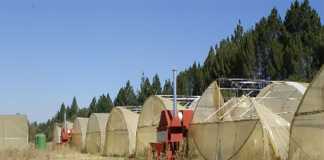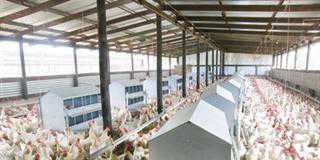Copying the way nature works and combining biology and nanoscale technology is set to revolutionise the food chain from field to plate. Scientists predict that nanotechnology will bring broad advances in agricultural research: in reproductive science and technology, in conversion of agricultural and food waste to energy and other useful by-products, in disease prevention and treatment.
Materials with self-assembly and self-healing properties will find application in agriculture, from packaging food in self-healing containers to preventing microbial contamination and facilitating preservation, storage and distribution. Nanotechnicians tasked by the US Department of Agriculture to fast-track research on the nanoscale are developing incredible materials that will increase the efficiency and quality of America’s agricultural production and food storage, enhance food safety, and introduce new value-added agricultural food, fibre and commodities and products.
Nanotechnology enables working, manipulating and creating tools, materials and structures at molecular level, often atom by atom, into functional structures. Duplicating nature’s millions of years old nanotechnological feats, scientists are just beginning to glimpse these methods of creating self-replicating, self-monitoring, self-controlling and self-repairing tools, materials and structures. Soon, a bioanalytical nanosensor will detect a single virus particle long before the virus multiplies or symptoms manifest in plants or animals, and detect contaminants, environmental characteristics, heavy metals, and allergens. They will enable continuous remote sensing of agricultural products during production, processing, packing and distribution.
Nanodevices for Identity Preservation (IP) – a system providing consumer information about the practices and activities used to produce a particular agricultural product – will include hand-held sensors to detect pathogens, viruses, chemicals, proteins or GMOs introduced during food processing and production on the farm. These will be augmented by over-the-counter sensors for food and environmental safety. Nanoscale IP could continuously track and record the history of a product from storage to shipping, and from store to transfer to the consumer. Certifying inspectors will use IP as a more efficient way of recording, verifying, and certifying agricultural practices.
Research on bioselective surfaces with either an enhanced or reduced ability to bind or hold specific organisms or molecules will be critical in the development of these biosensors and detectors, as well as for catalysts, bioremediation, the ability to separate or purify mixtures of biomolecules, and for processing and packaging food.
Today fertilisers, pesticides, antibiotics, probiotics and nutrients are still applied by spray or drench to soil or plants, and through feed or injection systems to animals. Pesticides or medicines are either given as preventative treatment, or are provided once the disease organism has multiplied and symptoms are evident. Nanoscale devices are envisioned that would detect and treat an infection, nutrient deficiency, or other health problem long before symptoms become evident at the macro scale. This type of treatment could then be targeted at the area affected.
Smart drug delivery systems in animals would most likely contain small, sealed packages of the prescribed drug. A molecular-coded address label on the outside of the package could allow the package to be “dropped” at the correct site in the body. Smart delivery systems could also contain on-board chemical detection and decision-making capability for self-regulation that could deliver drug or nutrient treatments as needed. Remote activation and monitoring of intelligent delivery systems can assist agricultural growers of the future to minimise antibiotic and pesticide use.
‘Scouting’
Nanotech devices providing “scouting” or monitoring capabilities would be a quantum leap improvement of a manager’s ability to determine the best time of harvest for the crop and the health of the crop, or address microbial or chemical contamination. One priority is to develop a non-invasive plant health monitoring device for early stress detection in hydroponic systems, based on detection of changes in plant metabolism, respiration, root-zone excretions and root zone microbial ecology. Miniaturised test kits or microbial-based detectors on a chip may identify field pathogens and protein.
For nanotechnology to reach its full potential, the various nanotechnologies will have to be integrated into a working control system – much like designing and building the logic of a nervous system that will allow the individual parts to work together. – Roelof Bezuidenhout
Based on a US Department of Agriculture report.













